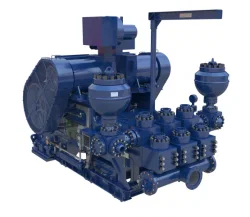Features and aspects of a hand hydrostatic test pump
2024-04-07
A hand hydrostatic test pump, also known as a manual hydrostatic test pump, is a portable and manually operated device used to pressurize systems or components for hydrostatic testing. Unlike electric or gasoline-powered hydrostatic test pumps, which rely on motors or engines for operation, hand pumps are operated manually by hand, making them suitable for smaller-scale applications or situations where power sources are not readily available.
Here are some key features and aspects of a hand hydrostatic test pump:
1. Manual Operation:
- Hand hydrostatic test pumps are operated by hand, typically using a pumping handle or lever to generate hydraulic pressure. This manual operation allows operators to control the pressure output and adjust the pumping speed according to the testing requirements.
2. Compact and Portable:
- Hand pumps are compact and lightweight, making them easy to transport and maneuver in various job site conditions. Their portability allows operators to perform hydrostatic testing in confined spaces or remote locations where larger equipment may not be practical.
3. Pressure Gauge:
- Like other types of hydrostatic test pumps, hand pumps are equipped with a pressure gauge that measures the hydraulic pressure applied to the system or component being tested. The pressure gauge provides real-time feedback to the operator, allowing them to monitor and control the pressure accurately.
4. Hoses and Fittings:
- Hand hydrostatic test pumps are connected to the system under test via hoses and fittings that allow the pressurized fluid to be transferred from the pump to the test object. These hoses and fittings are designed to withstand high-pressure conditions and ensure a secure connection.
5. Safety Features:
- Hand pumps may include safety features such as a pressure relief valve or over-pressure protection to prevent over-pressurization of the system and ensure operator safety. These safety features help prevent accidents and damage to the test equipment or the system being tested.
6. Versatility:
- Hand hydrostatic test pumps are versatile tools suitable for a wide range of applications, including testing pipes, tubing, valves, fittings, and other pressure-containing components in plumbing, HVAC, firefighting, and industrial systems.
7. Ease of Use:
- Hand pumps are straightforward and easy to operate, requiring minimal training or technical expertise. Operators simply need to follow the manufacturer's instructions for setup, operation, and safety precautions to perform hydrostatic testing effectively.
8. Affordability:
- Hand hydrostatic test pumps are generally more affordable than electric or gasoline-powered pumps, making them a cost-effective option for smaller-scale testing projects or budget-conscious users.
Overall, hand hydrostatic test pumps offer a convenient and practical solution for performing hydrostatic testing in various applications, providing reliable and accurate pressure testing results with manual operation.



